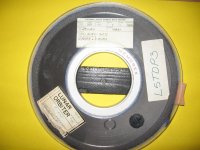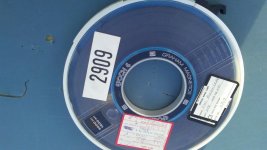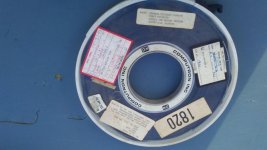T4600C
Experienced Member
I got a NASA data reel, and I am looking into getting several more. I am talking with a computer museum about digitizing them.
Today I played part of the tape through an AKAI X201D. I did not expect to get any usable data, maybe a faint signal.
This is the tape:
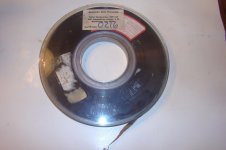
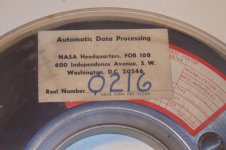
You can find WAV files and spectrograms here: https://drive.google.com/drive/folders/17vss0VXnpmGchf0DuRh3w2wXxNNphkYA?usp=sharing
Test001.wav through Test003.wav were manually moved along the heads. test004.wav and test006.wav was fed along the heads via the capstan at 3 3/4. test005.wav is played at 7 1/2 inches per second.
Test005.wav has a continuous tone.
test006.wav is the very beginning of the tape, and has weird bursts at the beginning.
I do not know anything about data tapes, and how the data was stored. If you know what these sounds mean, please enlighten me.
Do you think this tape can be read on an IBM 1401?
Discuss!
Today I played part of the tape through an AKAI X201D. I did not expect to get any usable data, maybe a faint signal.
This is the tape:


You can find WAV files and spectrograms here: https://drive.google.com/drive/folders/17vss0VXnpmGchf0DuRh3w2wXxNNphkYA?usp=sharing
Test001.wav through Test003.wav were manually moved along the heads. test004.wav and test006.wav was fed along the heads via the capstan at 3 3/4. test005.wav is played at 7 1/2 inches per second.
Test005.wav has a continuous tone.
test006.wav is the very beginning of the tape, and has weird bursts at the beginning.
I do not know anything about data tapes, and how the data was stored. If you know what these sounds mean, please enlighten me.
Do you think this tape can be read on an IBM 1401?
Discuss!
Last edited:

